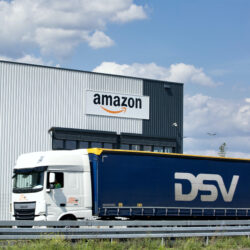Carlos Cordon: ‘‘It’s time to look to local and regional supply chains to remain competitive”

The most agile companies are embracing the regional and local approach to supply chains to better respond to market needs, says IMD Professor of Strategy and Supply Chain Management Carlos Cordon, as the benefits that drove globalisation fade.
Deciding how to manage the balance between local, regional and global supply chains used to be easy for larger companies. The obvious advantages of arbitraged labour costs and economies of scale made the case for globalisation watertight. But times have changed, and many large companies have been left exposed and vulnerable to more agile competitors that do not rely on slow global chains of supply to meet rapidly-evolving market needs.
The COVID-19 pandemic has also revealed flaws in maintaining the global supply chains that many companies saw as the best way to remain profitable. Alongside the pandemic, the need to serve customers in a more responsive and agile way – as well as holes in the theory that global means cheaper – are driving more companies away from globalisation towards more flexible regional and local supply systems.
Here are some of the key factors to consider as you evaluate your approach to the structure of your supply chains.
Micromarketing and e-commerce have changed everything
The rise of social media influencers has created opportunities for growth on a small scale that are better suited to highly agile, local companies. At the same time, the e-commerce boom has triggered an avalanche of small, innovative brands that serve niche markets. The consequence is that globalised economies of scale are much more difficult to find and slow global supply chains are no match for this niche, agile revolution.
Does it make sense to have lighthouse factories or big warehouses?
Some companies still want to build state-of-the-art, flagship factories that serve as beacons of dominance in their industries. But these huge investments in one specific geography make little sense when your competitors are working out of multiple, smaller factories that can be reconfigured and built at speed. At the same time, we are seeing that retailers that keep stock onsite, rather than in big warehouses, are able to respond more quickly to consumer trends.
A blend might be best
It’s easy to see this as a debate between local and global. It is more useful to consider the challenge as balancing your needs at local, regional and global level. Would it be best to set up regional hubs that can offer some economies of scale while being able to respond more easily to localised needs? Does it make sense to manufacture some parts of a product in China and other parts of it in Mexico when the cost of shipping erases the savings? Are there some aspects of your offering to customers that could still benefit from a global production chain? How vulnerable is your business model to global or local shocks?
Some things are best done locally
If you are making cement, which is expensive to transport over long distances, you need to be local. The same is true for any type of fresh food that needs to be delivered quickly. Some retail companies – especially in fashion – are also realising that it’s better to have supply chains closer to local markets so that they can adapt swiftly to the latest design trends and stay relevant.
It’s a trade-off between agility and efficiency
Global has traditionally meant efficiency – and that still rings true to some extent. If you making a commodity product with thin margins, globalised supply chains can still make it profitable. On the other hand, local tends to mean agility. This is becoming increasingly important in a turbulent world where markets are evolving at speed. The benefits of globalised economies of scale have to be put into the context of what you lose in terms of agility at a local level.










